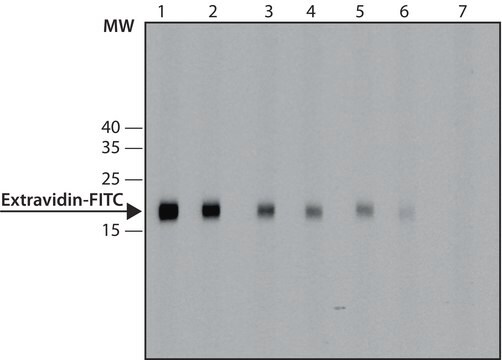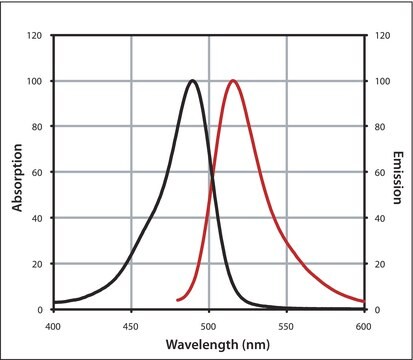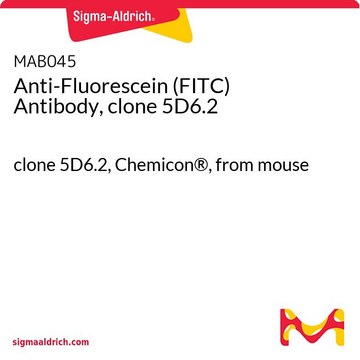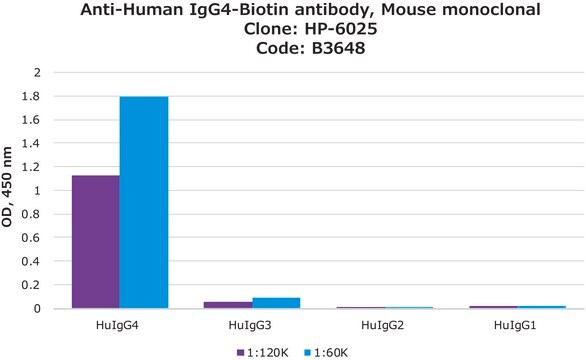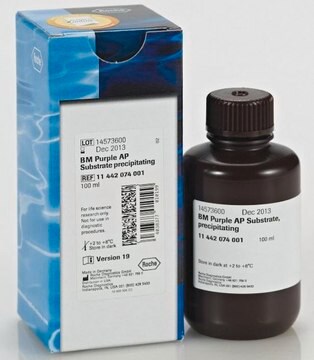Wszystkie zdjęcia(1)
Kluczowe dokumenty
11426338910
Roche
Anty-Fluoresceina-AP, fragmenty Fab
from sheep
Synonim(y):
przeciwciało
Zaloguj sięWyświetlanie cen organizacyjnych i kontraktowych
About This Item
Kod UNSPSC:
12352203
Polecane produkty
pochodzenie biologiczne
sheep
Poziom jakości
białko sprzężone
alkaline phosphatase conjugate
forma przeciwciała
affinity purified immunoglobulin
rodzaj przeciwciała
primary antibodies
klon
polyclonal
Formularz
solution
opakowanie
pkg of 150 U (200 μl)
producent / nazwa handlowa
Roche
izotyp
IgG
temp. przechowywania
2-8°C
Opis ogólny
Fluorescein is synthesized from m-dialkylaminophenols or resorcinols condensed with phthalic anhydrides under harsh conditions. Fab fragments bind to G proteins.
This gene encodes a member of the SOX (SRY-related HMG-box) family of transcription factors involved in the regulation of embryonic development and in the determination of the cell fate. The encoded protein may act as a transcriptional activator after forming a protein complex with other proteins. This protein acts as a nucleocytoplasmic shuttle protein and is important for neural crest and peripheral nervous system development. Mutations in this gene are associated with Waardenburg-Shah and Waardenburg-Hirschsprung disease. (provided by Ref Seq)
Specyficzność
The polyclonal antibody reacts with free and bound fluorescein.
Zastosowanie
Use Anti-Fluorescein-AP, Fab fragments for the detection of fluorescein-labeled compounds using:
- Dot blot
- ELISA
- Immunohistocytochemistry
- In situ hybridization
- Southern blot
- Western blot
- Electrochemical biosensing technique for the detection of 16S rRNA
Działania biochem./fizjol.
Anti-Fluorescein-AP, Fab fragments has been used in oligonucleotide capture, denaturation and detection (CDD).
Cechy i korzyści
Contents
Solution, stabilized
Solution, stabilized
Uwaga dotycząca przygotowania
- Working concentration: The following concentrations depend on application and substrate and should be taken as a guideline. Dot blot: 150mU/ml
- ELISA: 150 to 300mU/ml
- Immunohistocytochemistry: 250 to 500mU/ml
- In situ hybridization: 1.5 to 7.5U/ml
- Southern blot: 150mU/ml
- Western blot: 250 to 500 mU/ml
Working solution: 100mM Tris-HCl, 150mM NaCl, pH 7.5. If necessary 1% Blocking reagent (w/v), dry milk powder, 1 to 5% heat inactivated fetal calf serum (v/v) or sheep normal serum can be used for reduction of unspecific binding.
Inne uwagi
For life science research only. Not for use in diagnostic procedures.
Ta strona może zawierać tekst przetłumaczony maszynowo.
Nie możesz znaleźć właściwego produktu?
Wypróbuj nasz Narzędzie selektora produktów.
Hasło ostrzegawcze
Warning
Zwroty wskazujące rodzaj zagrożenia
Zwroty wskazujące środki ostrożności
Klasyfikacja zagrożeń
Skin Sens. 1
Klasa zagrożenia wodnego (WGK)
WGK 1
Temperatura zapłonu (°F)
No data available
Temperatura zapłonu (°C)
No data available
Wybierz jedną z najnowszych wersji:
Masz już ten produkt?
Dokumenty związane z niedawno zakupionymi produktami zostały zamieszczone w Bibliotece dokumentów.
Klienci oglądali również te produkty
Applications And Engineering Of Monoclonal Antibodies (1998)
Simplified Paper Format for Detecting HIV Drug Resistance in Clinical Specimens by Oligonucleotide Ligation
Panpradist N, et al.
PLoS ONE (2016)
Nadia A Fernández-Santos et al.
PLoS neglected tropical diseases, 14(1), e0008008-e0008008 (2020-01-31)
All formerly endemic communities of the Southern Chiapas focus of onchocerciasis in Mexico were treated with ivermectin until parasite transmission was eliminated by 2015. Transmission of onchocerciasis did not resume during a period of three years (2012-2014) following the final
Fluorescent indicators for cytosolic calcium based on rhodamine and fluorescein chromophores
Minta A, et al.
The Journal of Biological Chemistry, 264(14), 8171-8178 (1989)
Mohammad Goudarzi et al.
Developmental cell, 43(5), 577-587 (2017-11-28)
Cell migration is essential for morphogenesis, organ formation, and homeostasis, with relevance for clinical conditions. The migration of primordial germ cells (PGCs) is a useful model for studying this process in the context of the developing embryo. Zebrafish PGC migration
Nasz zespół naukowców ma doświadczenie we wszystkich obszarach badań, w tym w naukach przyrodniczych, materiałoznawstwie, syntezie chemicznej, chromatografii, analityce i wielu innych dziedzinach.
Skontaktuj się z zespołem ds. pomocy technicznej

